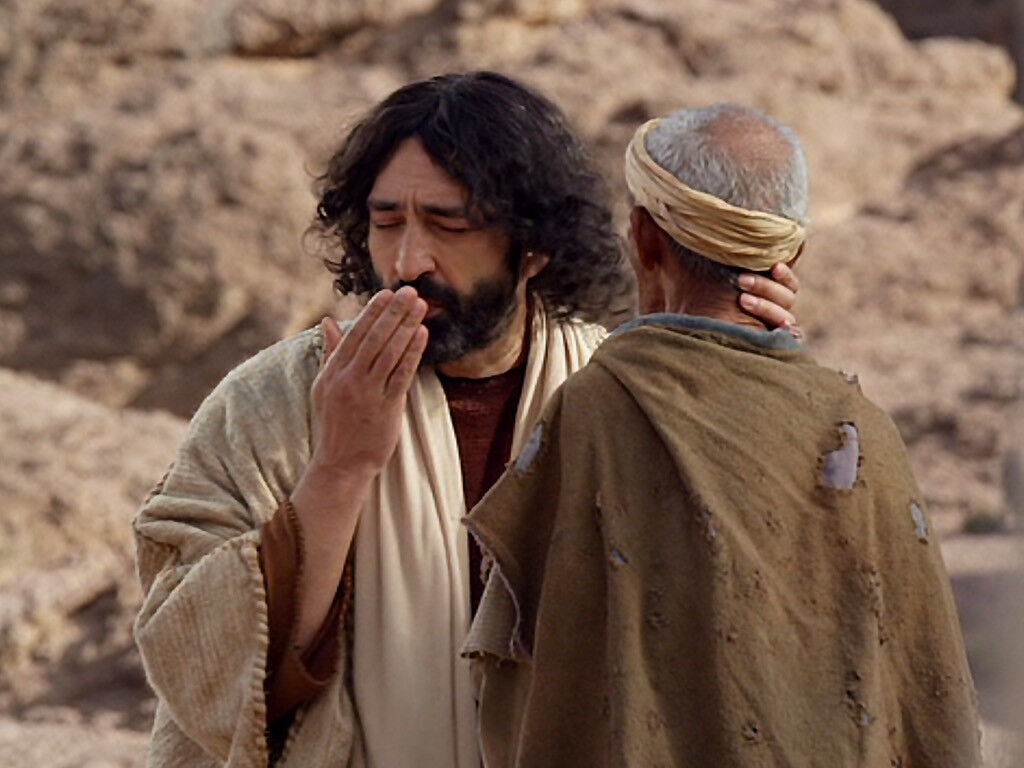At first glance, this Sunday’s Gospel seems rather straightforward: Jesus heals a “deaf and mute” man. But if we dig a little deeper, we can unearth some surprising parts of the story that shed light on Jesus’s relation to the human body and to nature.
First off, it’s not entirely true to say that the man was “mute.” The Greek word used, mogilalos, is more accurately translated as “having difficulty speaking.” So perhaps we can think of what we would call today a “speech impediment.” Still, both conditions would have been considered a tragedy in Jesus’s time. Today the Deaf are part of a vibrant community and those with speech impediments can seek treatment. Not so in the first century. So being healed in this way would have been considered a tremendous, life-changing, blessing. And of course it would echo the prophecy from the Book of Isaiah, which looks forward to a time when the “ears of the deaf be cleared” and the “tongue of the mute will sing.”
Second, unlike in other Gospel stories, Jesus heals by placing his fingers in the man’s ears and using his saliva on the man’s tongue. As the “Sacra Pagina” commentary notes, “We are meant to envision Jesus’s spitting in his hands and then ‘anointing’ the man’s tongue.” Here, Jesus uses his own body, and bodily fluids, to effect a miracle. In doing so, he subtly reminds us of the holiness of the body.
Jesus does not shy away from using his own body—his saliva and his fingers—to help someone.
Third, this is the only place in the Gospels where Jesus sighs or groans before doing a miracle. In the story of the “Woman with the Hemorrhage” in Mark (5:24-24) and Luke (8:42-48), he feels “power” go out of him, suggesting a physical effort. Here we also see the emotional cost of his performing what the Synoptic Gospels call “works of power.”
So overall it’s an earthy, physical, bodily, reading. It is similar to Jesus’s healing a blind man in John’s Gospel, by making a paste with his own saliva and dirt and applying it to the man’s eyes (9:6-12).
This is not the usual way that the Gospels present Jesus’s miracles. Most often he says just a word or two and the person is instantly healed. In Luke’s version of the healing of Roman centurion’s servant, Jesus goes one step further and doesn’t say anything (7:1-10). The centurion’s servants simply tells Jesus that the man sick and, after a dialogue, the servants return home and find that the man has been cured.
So we can wonder: Is this very earthiness—his use of spit and fingers—why this healing story is not included in Matthew or Luke, who usually recount other miracles from Mark? Perhaps by that time in the early church the idea that Jesus would use anything other than a command was seen as “less than” for the Son of God.
But there is great wisdom in this beautiful Gospel story. Jesus does not shy away from using his own body—his saliva and his fingers—to help someone. In other places, he “lays hands” on people to help them. And, as we’ve seen, in John it’s no problem for him to use even dirt to cure someone. In a time when we often think that the Christian faith asks us to deny our bodies—and of course sometimes we must—it’s important to be reminded not only that God came to dwell among us in a human body—in flesh—but also that Jesus ennobles the body by making use of it as he brings people new life.



